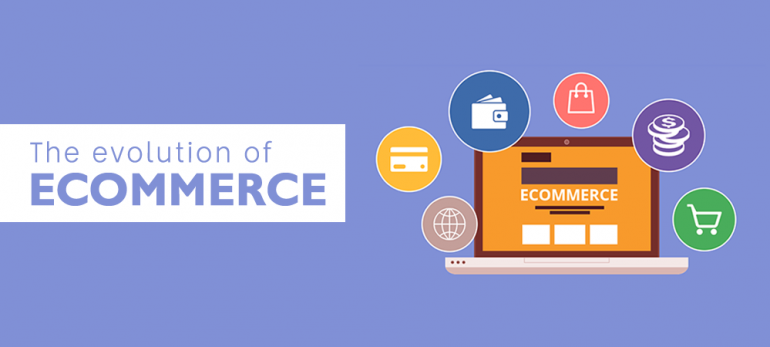Over the last decade, e-commerce has completely revolutionized the dynamics of online retail. What started as a novel concept became a business model, and now a major part of the world’s economy. According to Statista, e-commerce recorded a 3.5 trillion worth of global retail in 2019, estimating a 20% increase from 2018. With its ever-growing reach, diverse business sectors, and abundant consumer segments, experts believe the e-commerce behemoth will soon devour all of the physical store sales in the next few years. But what keeps consumers gravitating towards online shopping? How did retailers manage to provide the same comfort and security of traditional stores? Which determinants helped imbue online shopping into the consumer’s lifestyle? Well, let’s find out!
Personalization in Online Shopping
Ecommerce over time has transformed into a diverse retail system, providing solutions on some of the most sophisticated levels to the modern-day consumer. Whether it is the finance, education, health, security, or fashion sectors, e-commerce offers a diversity of solutions each based on the regional, demographical and economic preferences of the customer. Products can be purchased on layaway payment structures, customers can pre-order un-released products, use drone delivery options, and select priority shipment methods such as same-day delivery. Moreover, customers from different regions are offered specialized store layouts, language and currency preferences based on their geo-location. This helps online merchants cater to their target segments more accurately and effectively.
Modernizing of Ecommerce Platforms
While e-commerce is slightly more than 2 decades old, its exponential growth actually began during the advent of more advanced, faster and user-friendly e-commerce platforms. These shopping carts such as Magento completely revamped the conventional retail practices and allowed merchants to bring faster exposure, better reach, and more profound shopping experience for their customers. These platforms underwent continuous upgradation to remain on par with the latest trends and standards to ensure top tier performance. Magento, for example, has remained a leading platform of choice for online merchants all across the world due to its impeccable performance, user-friendliness, and high-end features. With its upcoming update scheduled for June 2020, Magento 2 migration will take all of its store versions leaps ahead, incorporating a massive upgrade of architecture, functionalities, and features.
Online Marketplaces
Another key factor that has led to the constant growth and innovation of e-commerce is the marketplace model. Over the last decade, online marketplaces have gained immense popularity and consumer base. These platforms offering the biggest variety of products from around the world under one roof, but centralized and administered by the marketplace rules and policies. They support all kinds of B2B and B2C commerce and allow vendors to advertise through their own software planners. Giants such as Amazon, Alibaba, and Walmart have completely overwhelmed traditional buying and shopping channels, providing a highly efficient, sound, and convenient model to sell, buy and advertise. With late modifications, these marketplaces have integrated filtered search features that streamline product searching to a whole new level. You can add price, review, brand, region, color, size and several other similar attributes to get desired results in just one go.
The Advent of Artificial Design Intelligence
In just a matter of a few years, AI has diffused into even the smallest aspects of our lifestyle. From self-driving cars and virtual assistants to web design and advanced business forecasting tools, AI is around us in one form or the other. With AI’s progressive technology and advanced applications in e-commerce, intelligent web design tools have emerged that are capable of creating unique web layouts, themes, and interfaces, effectively bridging space between human input and machine automation. One of the first entrants was the Grid, an Artificial Design Intelligence (ADI) software capable of creating customized, modern-looking websites specifically shaped around the business needs, user interaction and personal preferences of the store owner. Over time, other AI innovators such as Wix, Adobe, Squarespace, Firedrop, Tailor Brands, and Bookmark have designed several powerful tools that are helping e-commerce businesses achieve their design goals, cut overhead costs, and improving user experience.
Mobile-Friendly Purchasing
But perhaps the biggest point of evolution in e-commerce is mobile responsiveness. Over the last decade, smartphone technology has completely reshaped the search and buying practices, from conventional desktop devices to faster and more secure mobile stores and apps. Mobile responsiveness allows e-commerce websites to convert their layout on smaller screens, becoming scalable and intractable without compromising their content.
According to experts, mobile commerce sales are expected to reach $3.56 trillion in 2021, achieving a 22.3% increase. With faster internet speeds, more affordable smartphone devices, and growing awareness of mobile shopping, mobile shopping is steadily gaining ground and now commands a major portion of global commerce.
While e-commerce will keep growing, its evolution will always bring innovative changes for both buyers and businesses. Analyzing from its present-day verticals and amazing technological interventions, the industry will see massive turnouts and record-setting achievements just a few years to come.







